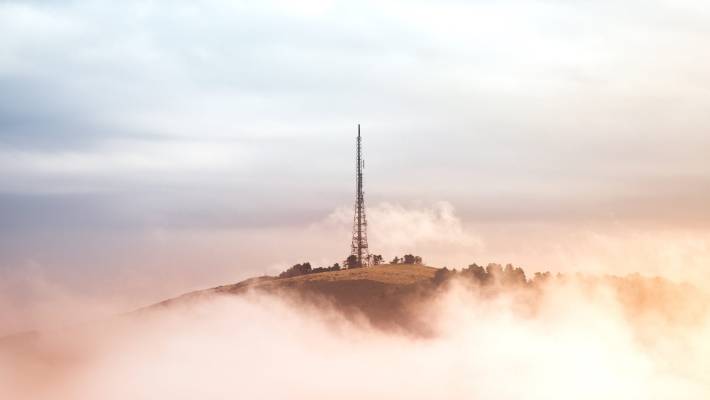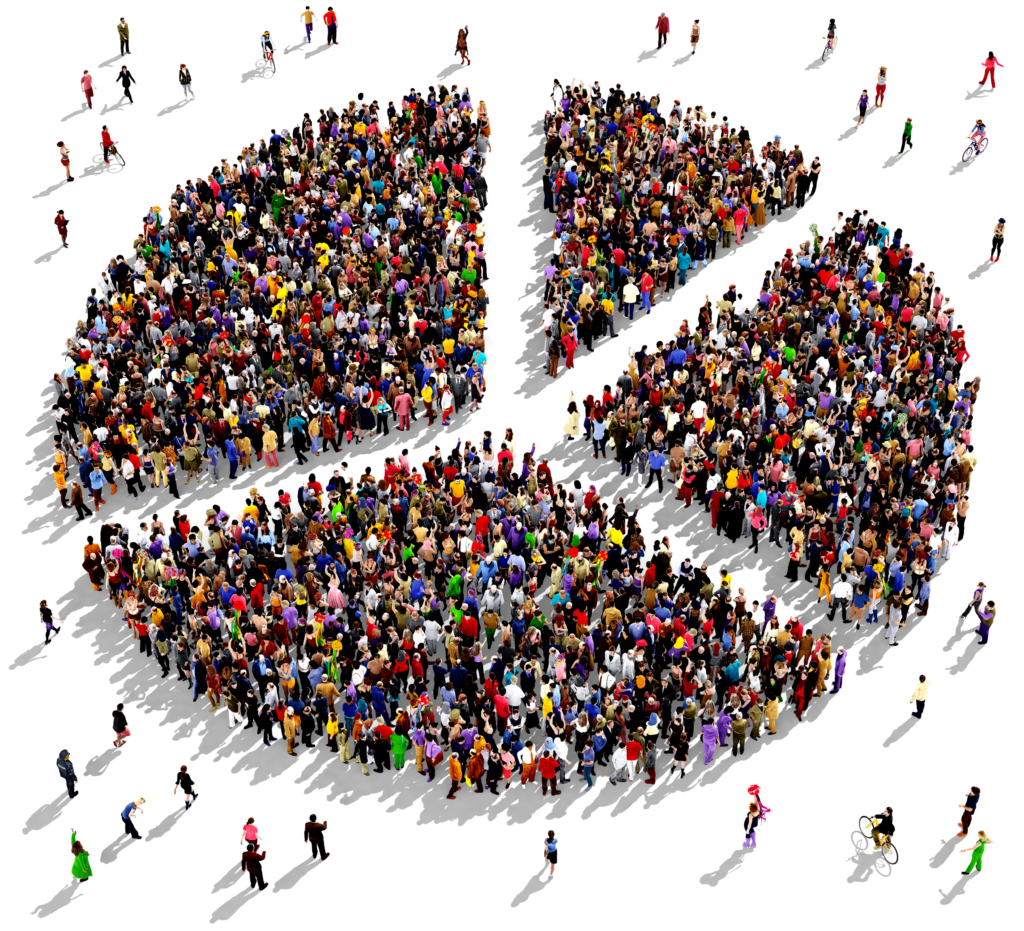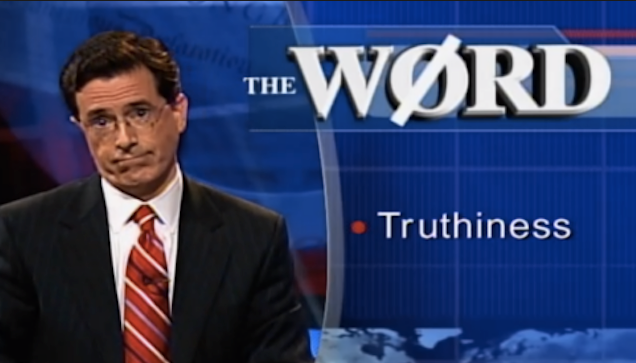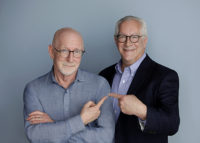
While in Italy earlier this month, I ran into a recent college grad from Seattle on one of our many tours. Her name was Alexa (you can’t make this up) and we got to talking about her plans, and I took the shot and asked her if she listens to the radio. She made a face, and replied with a demure “Well, sometimes.” The rest of the conversation went like this:
Me: Well, during those times when you find yourself listening to radio, what station do you usually spend time with?
Alexa: Probably 107.7.
Me: Oh yeah? What kind of music do they play?
Alexa: It’s an Alternative station.
Me: And are there any DJs on 107.7 you like?
Alexa: The morning guy is named Gregr and I do listen to him on occasion.

Me: Oh, I know Gregr – great guy. Want me to reach out to him to say hi when you get back home?
Alexa: (Squeal, voice goes up several dBs) ARE YOU KIDDING ME?! He is such a COOL guy. I listen to him ALL the time, I know all his bits, his dog, “Nerd Talk.” That would be SO awesome!”
A focus group of one.
But a very telling interlude about how working in broadcast radio has morphed from being a cool career into something of an albatross. If you work in radio, you know the feeling.
You meet someone for the first time, in business or at a party, and they ask you what you do. And when you respond, “I work in radio” you wait for it. Because more and more the response is likely to be:
“Oh, does anyone still listen to radio?”
As if you didn’t need any more reasons to distrust what you read online, here comes another of those “radio is dead” articles, this time by a web publication called Digital Music News.
Last week, writer Marsha Silva was the most recent scribe to pronounce radio soon to be dead as a door nail in a cheery piece – “Is Traditional Radio About to Crash? Audience Levels in America Have Been Flat for Three Years Straight.”
We’ve become used to misinformation online, whether it’s sponsored social media posts from foreign governments designed to confuse the electorate, or propagandists with an agenda. After all, if it’s on the web, it must be true.
It would be one thing if Silva’s “think piece” were well-researched and smartly conceived. But that’s not the case.
She discounts Nielsen’s newest data that (from their Audio Today report) shows 272 million people now listen to broadcast radio each week as “stagnation” – even though that’s up from 270 million the year before. To actually increase listenership in the teeth of the most competitive audio media environment in history is no small accomplishment for a “platform” about to celebrate its 100th year.
By all accounts, it’s been a pretty good run.
Silva writes it off as “a small bump…within the margin of error.”
She also points out (still from Nielsen’s Audio Today report) that broadcast radio outperforms television, smartphones, and computers in overall  penetration.
penetration.
But she discounts this data by noting that “radio listeners are generally less focused than users of other platforms.” She contends that ads on smartphones are more effective because users “must acknowledge them.”
And that when one considers that “listening to the radio” might really be “hearing radio” because people are unwittingly exposed to stations in stores is another reason to doubt the medium’s true reach and impact.
Silva also questions the data generated by the key source of her article – Nielsen. Now, that’s nothing new because many of you reading this aren’t always thrilled with Nielsen’s results.
But at least you know how the ratings work.
First, she notes that ratings are merely “estimates.” How can one trust the 272 million figure when it’s just an intelligent guess? But of course that ignores the fact all ratings – polls, surveys, the U.S. Census – are estimates.
Researchers make their best effort to be as accurate as possible. At the end of the day, surveys are not an exact science. And by the way, Nielsen (as well as Arbitron before it) reminds stations, agencies, and writers their numbers are, in fact, estimates.
Silva points out that Nielsen “doesn’t ask each person in the country when they listen to the radio, why they listen to the radio, how often they listen to the radio, and so on.”
Referring to Nielsen ratings as “a source of relative controversy,” she goes on to remind her readers that she doesn’t actually know the company’s ratings methodology:
 “If Nielsen’s way of measuring radio-listener demographics is similar to its way of measuring television-viewer demographics – and one would have to believe that the two are similar, both generally and because of the specifics listed at the end of the 2019 Audio Today Report – the details may surprise those who aren’t yet familiar with them.”
“If Nielsen’s way of measuring radio-listener demographics is similar to its way of measuring television-viewer demographics – and one would have to believe that the two are similar, both generally and because of the specifics listed at the end of the 2019 Audio Today Report – the details may surprise those who aren’t yet familiar with them.”
Including Silva.
And she concludes her “analysis” by reminding her readers that for radio listening in the future, “the writing is on the wall.” Not a good prognosis.
But why should anyone in radio care about this wrong-headed story in just another one of thousands of online media publications?
According to its “About” page, ““Digital Music News is the information authority for music industry and technology executives. We’re a highly influential source of news and industry analysis for millions of readers worldwide. Our audience is comprised of highly-targeted decision-makers from every segment of the business, including recordings, publishing, streaming, live concerts, talent development, venture capital, and broader tech.”
Well, let’s hope none of those people actually read Silva’s misinformed article. Because if that is an accurate description of their reach, ostensibly some media execs who control the purse strings will, in fact, read it. Other publications will re-post it, forward it, and socialize it. And before you know it, Silva’s “take” on radio will become the truth.
That’s why broadcasters need to communicate with more than just Wall Street about the industry’s health, its continued viability, and its relevance.
A communications strategy to market and position the medium is long overdue, especially in this highly caffeinated environment where “truthiness”  poses as fact.
poses as fact.
Despite the fact we now have more media outlets, more news channels, more web publications, and social platforms, we’ve never had to wallow through so much misinformation.
Traditional institutions no longer deliver trust and security. While we’re being taught to question everything, anything, and anyone, we also are being fed “alternative facts” like they’re coming out of a fire hose.
The radio industry needs to take control of its narrative, whether we’re talking to listener, advertisers, or each other. It’s basic marketing – a skill this industry knows like the back of its hand.
And Marsha isn’t the only “journalist” to take pot shots at a medium that’s been an American fixture for nearly a century. Coverage of radio like this “story” in Digital Music News isn’t just an outlier – it’s an everyday occurrence and it’s erosive.
We all know radio is far from perfect, and under fire by competition for ears and ad budgets. The industry faces existential challenges that transcend what our forefathers endured in the 1950s when TV sets showed up in living rooms and dens seemingly overnight. It struggles to provide strong, consistent service in the face of staff and budget cutbacks. But it continues to be a reliable, steady part of the “fabric of habit” enjoyed by millions and millions of listeners from coast to coast.
It deserves better than articles like this one.
Hey, that 100th birthday is coming up in 2021 – before we know it. What’s the plan, Stan?
And by the way, I hooked Alexa up with Gregr. I need to find out how it went, but somehow I know.
You can access Nielsen’s 2019 Audio Today report here.
- Can Radio Afford To Miss The Short Videos Boat? - April 22, 2025
- Media And Technology In 2025: Believe It Or Not! - April 18, 2025
- In Radio, You Just Never Know - April 17, 2025




Lots of “hypotheticals” in this article, Fred. Plus the final sentence:
“This reality doesn’t mark the end for radio, but it does indicate that as tech further develops, so too will the way music—and audio entertainment—is enjoyed.”
Music is one thing-and it’s just part of “audio entertainment”. Her publication deals only with the music part, recites some Nielsen “estimates” and then says “the reality….”. Wow.
Realistically-tech will continue to develop. The consumer will find more distractions (as they have since phonograph records began to replace “live” in-home music) and the strong will survive.
I recently had a conversation with a friend who manages SIX radio stations. We were in the lobby of the building and by 6pm we were the only ones there. Is that strong? Probably not. That’s a weakness of the source material. Follow it with the distractions the consumer faces. Radio’s reinvention begins when it’s more relatable to the listener. The Alexa experience shows one side, the Silva article shows another. The tech world has made consumers more informed, not necessarily smarter. If Alexa finds KNDD more relatable now than she did before -radio wins. Until she finds a more suitable audio experience. My opinion only….just like the Silva article
Hey, Dave, as the saying goes, we all have one. An opinion, that is. I’m blessed that many read mine most days – a wonderful gift. And that I hear from engaged folks like you is a bonus. Thanks for reading our blog.
Marsha, Marsha, Marsha. Radio isn’t dead, it’s just different than what it was. If I could get 270 million people to read my books, I’d be rich. But let me just suggest there is a mistake in your article, radio’s 100th birthday is 2020. Look it up, KDKA 1920. But being closer to 100 myself, the good news; radio is alive and well. It’s just different.
Perfect.
Actually, the 2020 mistake may be mine. I found a reference that KDKA started broadcasting daily in 1921. Let me blow a call into Art Vuolo to check this. 🙂
Seems any industry with 90+ percent of the population as consumers–and possibly STILL growing in the face of countless new competitors–can only be described, despite its challenges, as extraordinarily successful.
As for the author of the article, being I was taught if you can’t say anything nice about someone, don’t say anything at all, I’ll just simply say…
You’re more of a gentleman than me, Dave. Thanks for the comment.
Chuckle, chuckle, chuckle. Oh I DO adore you Fred. I’m not sure which is more amusing. You conducting focus groups while on vaca, or the tale of yet another mainstream outlet (don’t care that it’s a purported industry mag) writing another hit piece.
By the way, you may remember that for at least the last ten years I have written about this issue constantly. I did it at The Gavin Report, and also R&R. And blog, and anyone who will still listen to me.
Just curious, I wonder if Marsha has ever worked a day in radio. I’ll bet I know the answer.
And, interestingly, there is someone we can blame for the lack of agressive pushback. And I’ve also been writing about that as well.
I blame the NAB and the RAB. Two industry trade organizations that are supposed to have radio’s back. But don’t.
Radio stations nationwide pay good money each year to have their interests catered to.
The NAB/RAB have been less than effective, to say the least.
And if someone cares enough to have a conversation about that, I’m more than happy to point out their failures over the last ten years or so.
Where’s the sense of urgency? Where’s the outrage? Where’s the pushback?
OF COURSE radio is alive and kicking. But apparently only WE know it…
Max, I feel your pain. And also your continued love affair with this crazy medium that has survived despite bad government regulation (or lack of) and not always the best stewardship (and I’m being kind). As for our industry associations, I understand your (and other’s) complaints – many share those feelings. Maybe I’ve become a little “too inside,” but I know both the NAB and RAB are populated by well-meaning, caring, and concerned people – often hamstrung by all sorts of limitations – financial, political, and otherwise. It’s sort of like our own proprietary swamp.
One of our key challenges is that radio is not a platform – it’s a collection of fiefdoms, each run by chieftains, often with different agendas and priorities. They all support the medium, of course, but have very different paths they want to take. Lots of times, not a whole lot gets done. Kind of like Congress.
Somehow, Max, we’re still here. But sometimes I’m not sure how it happens.
Yeah, I understand the “herding cats” nature of our industry. But the NAB should lead, not follow. And not coddle.
I suppose you could look at this another way. Owners and managers are apparently not spooked enough, yet, to leap into action. Perhaps things need to get worse before they get better.
Yup, not enough bleeding – yet.
For me, the point seems to be that Alexa listens to the radio but doesn’t want to admit it. And she will probably stop listening to radio as she matches her actions to words; also from not being able to engage with any of her friends about what she heard on radio – because they won’t readily admit to listening.
So, the question actually becomes ‘How does radio engage it’s fans to become brand ambassadors?’
I think the air talent knows what to do, but aren’t being allowed to do it with reduced hours of live radio. And reduced playlists, and not being allowed to curate their own playlists within the stations format and sound.
In short, I think if radio is going to die it will be from being over-managed on air, not from lack of passion from the air staff.
Paul, there are many in the DJ community who are applauding your comments. I’ll actually have data on this issue when our AQ2 study is presented next week at Morning Show Boot Camp. As they say, stay tuned.